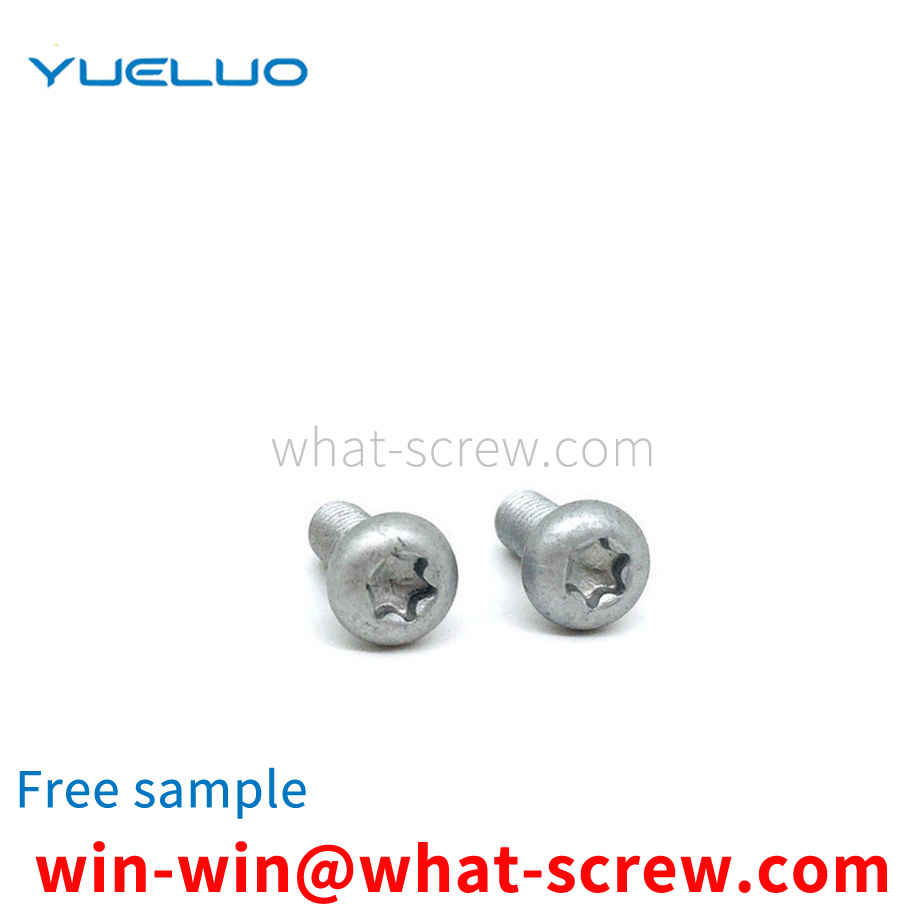What is the tolerance range of precision screws?
What is the tolerance range of precision screws?
Service Hotline
+86760-8787 8587We have more than ten years of production experience in the screw industry. The main products are: HG screws, Phillips pan head screws, bolts with holes, GB6180 hexagon slotted nuts, hexagon head with intermediate nuts, small teeth screws, carriage screws, aluminum profile accessories, Color zinc slotted flat head screws, flat burst screws, wave spring washers, bolt screw sets, large flat head bolts, 0 stainless steel 304 screws, plug bolts and other fasteners, due to different product materials and specifications, Prices also vary, please contact us if necessary.


The traditional gasket is a single-piece gasket that works independently. This gasket mainly relies on friction to achieve the anti-loosening effect. The new washer is composed of two pieces. Its unique embedded structure changes the way that the traditional washer mainly achieves anti-loosening through friction. Instead, it adopts the most advanced anti-loosening technology in the world and uses the tension between the two gaskets to achieve. The dual effect of anti-loosening and tightening.

NPT, PT, G are all pipe threads. NPT is the abbreviation of National (American) Pipe Thread, which belongs to the American standard 60-degree taper pipe thread, which is used in North America. National standards can be found in GB/T12716-1991 PT is the abbreviation of Pipe Thread, which is a 55-degree sealed conical pipe thread, which belongs to the Whitworth thread family and is mostly used in Europe and the Commonwealth of Nations. Commonly used in water and gas pipe industry, the taper is specified as 1:16. The national standard can be found in GB/T7306-2000 G is a 55 degree non-threaded sealing pipe thread, which belongs to the Whitworth thread family. Marked as G stands for cylindrical thread. National standards can be found in GB/T7307-2001 In addition, the 1/4, 1/2, 1/8 marks in the thread refer to the diameter of the pipe, and the unit is inches. People in the industry usually refer to thread size in points, 1 inch equals 8 points, 1/4 inch is 2 points, and so on. G seems to be the general name for pipe threads (Guan), and the division of 55 and 60 degrees is functional, commonly known as pipe circle. That is, the thread is machined from a cylindrical surface. ZG is commonly known as pipe cone, that is, the thread is made of a conical surface. The general water pipe joints are like this. Rc means conical internal thread ZG means taper pipe thread, 3/4 means inch mark, which is 3/4 inch conical pipe Thread, there is in the Hardware Manual. The national standard stipulates that the major diameter of ZG 3/4 thread is 26.44 mm. Please refer to Metric, American and British Thread Standard Manual (Third Edition). Its representation method should be: ZG 3 /4″. Among them (〃) is the representative symbol for inches. One inch is equal to 8 inches. The origin of 3/4 is 6/8=3/4. Commonly known as 6 points. Similarly, the major diameter of ZG 1/2″ thread≈21 mm. Commonly known as 4 points. ZG 1″ thread diameter ≈ 33 mm. Commonly known as 1 inch. ZG 1 1/2″ thread pipe outer diameter ≈ 48 mm. Commonly known as 1 inch and a half. Taper pipe thread is very similar to pipe thread, the difference is Only in the taper. Note that the basic size of the pipe thread and ordinary thread is different. DN is the nominal diameter


In the existing joint replacement, self-tapping screws are mostly used, and their triangular thread structure has a certain self-locking ability. After a long period of service, it is prone to loosening. The surrounding bone may not be tight enough after implantation, resulting in a sharp decline in its self-locking ability, and there may be a risk of regression, causing certain damage to the human body.

At present, with the continuous growth of the demand for communication products, higher and higher requirements are put forward for the production capacity of equipment manufacturers, and at the same time, the requirements for the cost, weight and reliability of communication products are also more and more stringent. In order to facilitate the positioning of the equipment, pins are often used to complete the equipment, and a certain cost is incurred for its manufacture and assembly. In the past, such parts have been assembled in the form of threads. In order to ensure that the assembly height is within the specified range and to prevent loosening, bar turning is often used to form threads and positioning steps, and thread pinning glue is used in the assembly, and the cost of machining is relatively high. Large, more material waste. Based on the above drawbacks, in order to better solve this problem, some existing manufacturers use the interference fit riveting method, which solves the problem of material waste and anti-loosening, but the inner diameter of the pin hole and the outer diameter of the pin are matched. The machining accuracy of the machine is relatively high. Once the matching size is out of tolerance, a second matching is required, which wastes working hours and increases the slack time.

The above content is uploaded by Yueluo or the Internet. If there is any copyright issue, please contact [email protected].

What is the tolerance range of precision screws?

How to choose the right stainless steel screw manufacturer?

Why is there an R angle under the head of the hexagon head s...

We have more than ten years of production experience in the ...

We have more than ten years of production experience in the ...

We have more than ten years of experience in screw industry ...

We have more than ten years of experience in screw industry ...